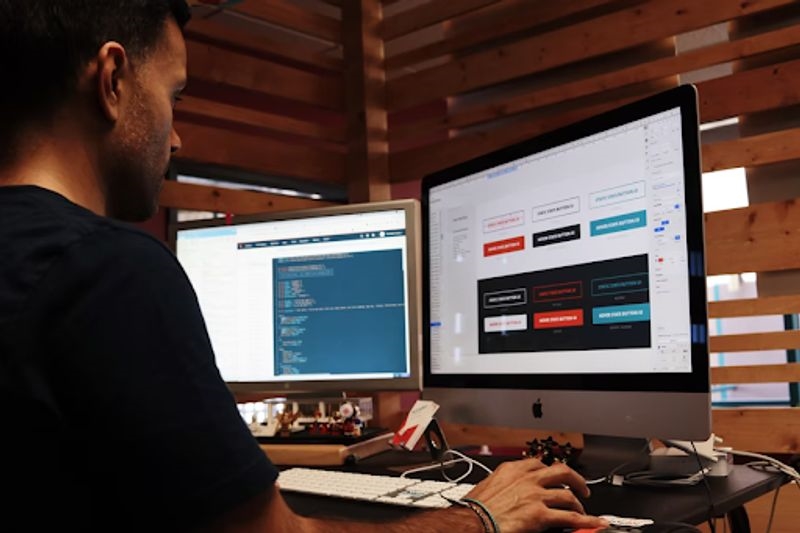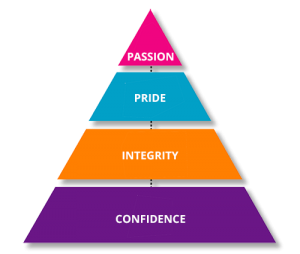
The reductive take on SEO is that it’s all about doing everything to ensure a website ranks as high as possible in the search engine results pages (SERPs) at the expense of everything else. Why bother coming up with slick and striking visuals if Google doesn’t care what colours you’re using or how eye-catching the images are in your headers?
The truth is that aesthetics do play a role in how effective SEO can be, although not in a direct manner. Google doesn’t care what your website looks like but design does contribute to user experience and this is an incredibly important ranking factor. It’s not about meeting some subjective standard of beauty. It’s about presenting a webpage in such a way that it fulfils its purpose and gives the user the best experience possible.
This concept of good design begetting good SEO is a mantra at Superb Digital. Whether designing a site from the ground up or a single web page, we’ll look at how the content’s going to be laid out in the most effective way for a page to fulfil its purpose, which is to convey pages and the information they contain intuitively, clearly and in a logical structure for the reader to navigate and consume. In this sense, aesthetics, by way of good layout and page design, compel users to engage with your content, and as such indirectly helps with improving a page’s ranking and conversion rate.
How Prioritising Aesthetics can be Prohibitive
So you might be thinking that since aesthetics do matter when it comes to helping SEO albeit indirectly, you should maybe put more focus on having an aesthetically appealing website. The problem with taking an aesthetics-first approach to building a website is that it can actually do the opposite and negatively impact SEO.
This can happen in two major ways:
Website Performance
In an effort to impress visitors through audiovisual stimuli, you may be tempted to load up your website with flashy animations, autoplaying videos, and high-resolution photos. Such elements can certainly draw people’s attention, but the drawbacks can be immense with how resource-intensive those elements can be.
Internet speeds have gotten much faster over the years, but that doesn’t mean you should go all out on a load of page elements that cumulatively hamper page load speed. This also goes for plugins that create code bloat and slow the website down (we know who you are).
Websites that take too long to load turn off visitors. But they also are a ranking factor.
Page load speed is one part of Core Web Vitals, which also factor in how quickly content is seen on the screen and how stable a page’s performance is. The more visual elements you have, the slower a page will load, which also makes the entire layout shift drastically as the page loads, resulting in less stability.
The problem translates to mobile devices as well. More than half of mobile page visits are abandoned if it takes a site longer than 3 seconds to load. You really don’t want to be weighing down your mobile site with countless animations and high-res photos, especially given mobile search has now surpassed desktop and laptop based search.
Functionality
Chasing after a specific design aesthetic to the expense of all else is losing sight of what actually matters when building a website. Indeed, it’s losing sight of what a commercial website is for and that’s to generate your business enquiries or sales.
First of all, what you think is aesthetically pleasing might not be what your audience thinks is aesthetically pleasing. It’s all too common for business owners to assume they know their customers inside out, but to have never actually taken the time to conduct thorough customer research to back up these assumptions.
Putting your subjective taste front and centre in designing your website leaves users as the afterthought. Ultimately your website should function to serve them, not you or your business. Whether it’s to subscribe to a newsletter, purchase a product, or contact your company directly, users have to be directed by the design to take those actions. You don’t want a website that overloads people with imagery and pretty things, which actually serve to distract them from your ultimate goals which is convincing them why they should do business with you or buy your products.
Prioritising aesthetics can mean having to fit content into your design. You’ll have to work harder within the limitations of the design to come up with content that might not accurately express the purpose of the site. Your content should always inform design, not the other way round.
How Aesthetics can be Useful
So far, we’ve only talked about the potential pitfalls of aesthetics in web design so it bears repeating that it’s better to look at aesthetics as a medium for delivering good UX, rather than just making your website visually appealing.
There are four principles that show how you can apply aesthetics properly to facilitate SEO:
Simplicity
Simple clean web design should funnel users to exactly where they need to go on your website. The less time it takes for them to have to process your site’s layout and navigation interface, the more likely they are to browse and the longer they will stay, which in turn leads to more conversions.
In practical terms, you want to keep your colour palette to a minimum, your fonts to be legible and contrast well with the backgrounds, and your graphics to only be there to serve a specific function.
Consistency
Websites have a visual language of their own. An example would be clickable links typically being in a different colour, and that colour changes once they’ve been clicked. Another would be to have dropdown menus at the top of the page for main categories, which are always visible wherever on the site a visitor might be.
Keeping such elements consistent and making sure they always function the same way ensures users can easily navigate your site.
Responsivity
When mobile devices make up 54.8% of global web traffic, there’s no overstating the importance of responsivity when designing websites. You have to account for how your website will look on the small screens of smartphones and tablets.
By incorporating responsive design, your site’s layout, images, and content will automatically fit the dimensions of whatever device the site is being displayed on. Although Google hasn’t explicitly stated mobile-friendliness as a ranking factor, it is something they recommend every site should strive for.
Accessibility
A well-designed website can be used by anyone, including disabled people. There is no good reason to unnecessarily limit the reach of your website by making it inaccessible because of non-inclusive design choices.
Following the Web Content Accessibility Guidelines, your website should be:
- Perceivable — Content can be presented to all kinds of users
- Operable — Users can navigate a site in different ways
- Understandable — Users can easily understand content
- Robust — The site can be used with current and future assistive technologies
The connective tissue between all four principles is that they all work to deliver content in a way that users will have no trouble finding and comprehending. That’s what makes for good UX, which keeps all people on your site.
SEO in the Design Process
When you think properly about aesthetics as usability, it becomes clear, not only that both it and SEO can coexist but in fact that they are intimately connected to each other. Good design is good SEO and vice versa. These two pillars of web design ultimately aim to do the same thing, which is present valuable content to users in an intuitive and enjoyable way. Accomplishing that requires knowing what the purpose of each page is from the start, understanding who is going to visit it and what it is they need.
Digital & Social Articles on Business 2 Community
(58)
Report Post







